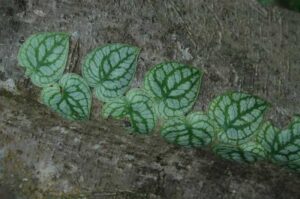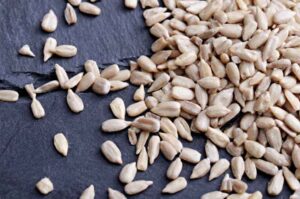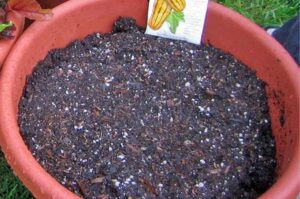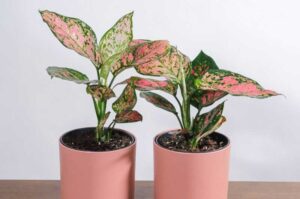Why are my Golden pothos leaves turning black?
Golden pothos
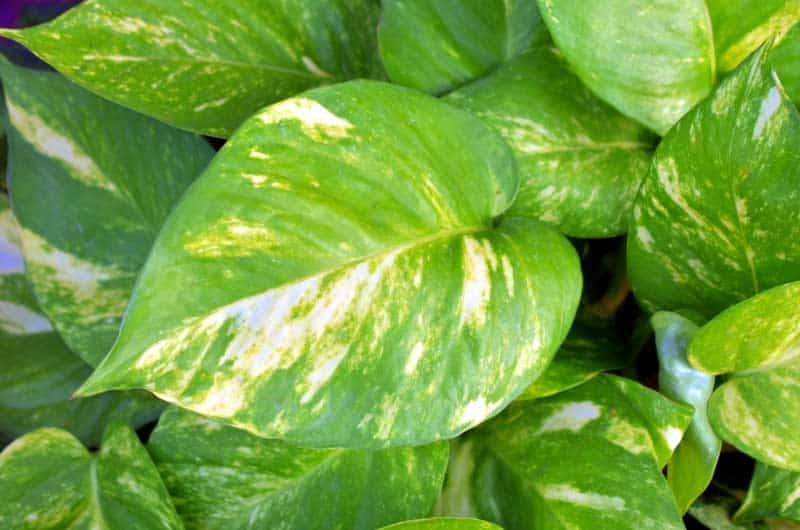
Golden pothos is the easiest to grow and the easiest to maintain indoor plants. They are probably the best plant for beginner gardeners. The golden-green variegated leaves shine as if they have been treated with a premium wax coating.
The appearance of the plant looks so upmarket, that you will be proud to be a happy owner of this plant. And this awsome experience requires very little effort.
Furthermore, the Golden pothos is also known for its air-purifying qualities. It can absorb the air polluting agents from the atmosphere and provide you fresh and clean air.
As per a research conducted by NASA, in association with ALCA, it is found that along with absorbing CO2 and releasing O2 , Golden pothos can also remove volatile organic air pollutant like formaldehyde, benzene, xylene and toluene. You can get the full list of plant by CLICKING HERE.
So the summary is that with a beautiful plant, you are getting the advantages of a natural air purifier free of cost.
But sometimes the beautiful variegated leaves of Golden pothos start to turn black or show some black-brown patches, on the leaves. This article will discuss why the Golden pothos leaves are turning black and what are the preventive measures you can take to prevent this.
Why are my Golden pothos leaves turning black?
Your Golden pothos leaves are turning black because you have overwatered your plant, or you have exposed your plant to very low temperature (temperature less than 45oF or 7oC). Due to overwatering the roots have started rotting and the leaves are turned to black.
Here is the list of some probable reasons about why are my Golden pothos leaves turning black
- Overwatering
- Faulty potting soil
- Exposure to low temperature
- Due to some insect pest attack
- Inappropriate fertilizer application
- Place of the plant
- Plant exposed to some harmful chemicals
The black leaves are often a symptom of physical or physiological disorder expressed by the plant. You have to carefully observe the indications and carefully act according to the situation.
Why are my Golden pothos leaves turning black?
Here are the probable reasons for the black leaves in Golden pothos, and their solutions.
Overwatering
Overwatering is the most common reason for the black leaves in Golden pothos. Many people lose their plants due to overwatering.
If you are applying more water than your plant actually needs, then there will be waterlogging conditions in the potting soil and your plant roots will not be able to respire properly.
If this situation continues for a long period of time, then the roots will start to rot, as a result of which your plant leaves will start turning black.
This is a serious issue and many people just lose their Golden pothos plant due to this.
If your Golden pothos plant is showing black leaves, then the first thing you have to do is check whether you are overwatering your plant or not.
Preventive measures
- To prevent this issue, you have to reschedule your watering.
- Apply water only when the top two-inch layer of the potting soil is dry.
- Never keep the potting soil muddy and waterlogged.
- You can keep a dry period between two watering also, it will not hamper the plant badly.
- Check the potting soil, if it is draining properly or not. If it is not freely escaping the extra water, then repot the plant with fresh potting soil having good drainage.
- Chose a pot with proper drainage holes, so that it can drain the extra water properly.
Faulty potting soil
As discussed above overwatering is the main reason for black leaves in Golden pothos, a fault potting soil may lead to a waterlogging condition beneath the plant.
If your potting soil is not draining the extra amount of water out of the pot, then there will be a waterlogged condition in the plant root zone and the root will start rotting, ultimately leads to the blackening of the leaf tips.
So this needed to be corrected.
You can read our article on How to make the perfect potting soil for your indoor plants by CLICKING HERE.
Preventive measures
- You have to make a well-draining potting soil for your Golden pothos.
- You can add some perlite or pumice to increase the drainage capacity of your potting soil.
Plant exposed to low temperature
I also have experienced that if a Golden pothos plant is exposed to low temperatures like temperature below 45 degrees Fahrenheit or 7.2 degrees Celcius, then the entire leaves may turn black.
Golden pothos is a tropical plant, and they grow well under ideal room temperature. But extreme low temperatures can be harmful to the plant.
Preventive measures
- Shift the Golden pothos plant to a warmer place in your house, where the plant can get some medium indirect sunlight.
- You can also use room heaters, but make sure that there will be proper humidity to keep this plant fresh.
Insect pest attack
Some common house plant insect pests like the mealybugs and the spider mites may also cause some black-brown spots on the plant leaves.
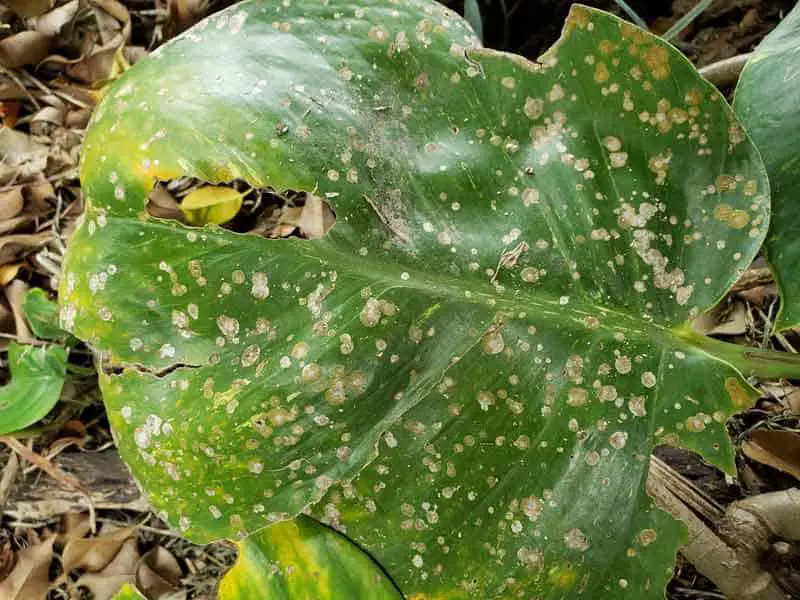
These spots due to insect pests are small and appear in the middle of the leaves, whereas the blackening due to root rot occurs from the sides of the leaves. At low temperatures, the entire leaf turns black.
Preventive measures
- Spray neem oil.
- You can also spray other insecticides available in the market.
- Wash the leaves using cotton soaked with water, you can wipe out the leaves. It will make your pothos plant look better and also remove the tiny insects and fungal spores from the leaf surface.
Wrong method of fertilizer application
If you are wrongly placing your fertilizer, it also leads to black leaves in Golden pothos.
Some people unknowingly apply fertilizers too close to the plant roots. If the harmful chemical fertilizers come in direct contact with the delicate plant roots, it make serious damage to the plant roots and hence the leaves start turning black.
Preventive measures
- Use organic fertilizer if possible. It is sustainable and nature friendly.
- If you are still using chemical fertilizer, make sure to apply them, at least a few centimeters away from the plant roots.
Location of the plant
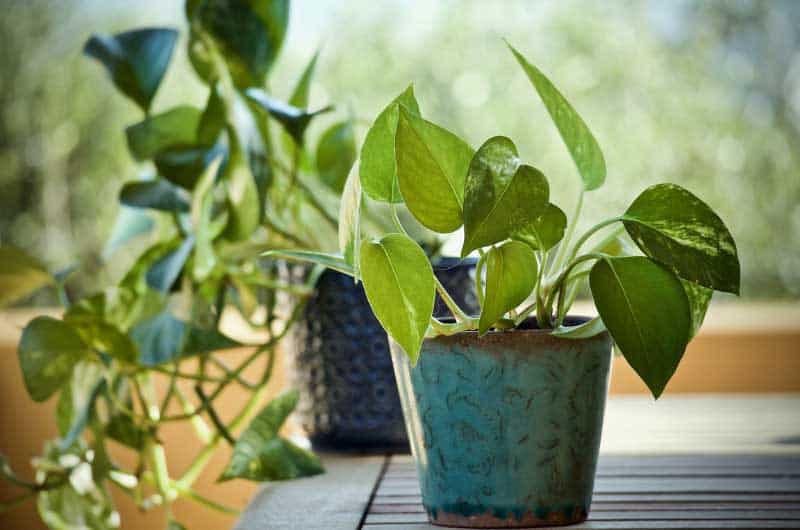
The place in which your plant is being kept has also a lot more contribution if your pothos leaves are turning black.
If you are keeping your plant in a place getting very less light, then it is obvious that it will take more time to dry the potting soil, which ultimately may lead to rotting of the roots.
However if your plant is kept in a place getting a good amount of bright indirect sunlight, the place will be warmer and the soil will dry out more easily.
So the location of your plant also determines the health of your plant a lot.
Plant exposed to some harmful chemicals
If your pothos plant is exposed to some harmful chemicals, like the floor wash you are using to clean your house, room cleaning agents, room sprays, etc. then also the leaves may turn black.
You have to prevent this as soon as possible, otherwise, your plant will suffer, which you would never like to wish.
Golden pothos in a nutshell
- Botanical name- Epipremnum aureum
- Common name- Golden pothos, Devil’s Ivy, Devil’s vine
- Family- Araceae
- Origin- French Polynesia
- Plant type- Tropical creeping vine
- Soil requirement- Plant grows well in well-aerated fertile soil with good drainage.
- Temperature- Ideal temperature is around 18 to 25 degrees Celcius.
- Light- Plants do well in bright to medium indirect sunlight.
- Humidity- Plant loves to grow in a humid place.
- Water requirement- A moist soil is ideal for this plant, but the soil should not be waterlogged.
- Fertilizer- A liquid houseplant fertilizer is sufficient.
- Propagation- This plant can be easily propagated using the stem cutting method.
- Toxicity- Plant is toxic in nature. Keep it away from pets and children.
Conclusion
These are the probable reasons, why your Golden pothos leaves are turning black. You can check at which point you are doing wrong with your plant, and correct it.
You are always welcome to write your experiences in the comment section. We would be appreciated.
HAPPY GARDENING

